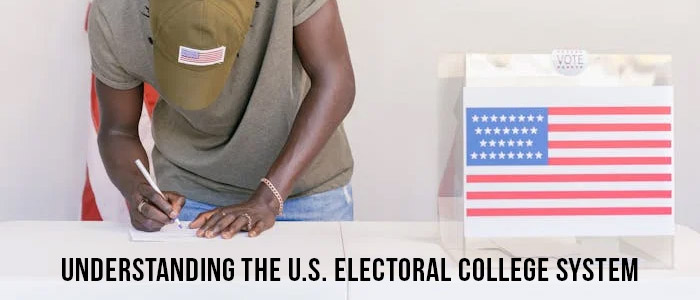Understanding the U.S. Electoral College System
The function of the president of the United States of America is more involved in the electoral college, a system in the Constitution through which Americans elect their president and Vice President. It has 538 electors and the numbers include the proportional population, and the representation in the Congress. 270 electoral votes are required for a candidate to be elected president.
The History
The framers of the Constitution had intended the Electoral College to look more like a middle ground between direct vote of the people and election by Congress. This system was supposed to bring the equilibrium between the relatively heavily populated States and the less populated States so as to ensure the right of the latter in the presidential elections. Indeed, the kind of compromise can be traced to the historical development of the late 18th century, when justification for the protection of minority interest or avoiding rule by mob was powerful.
A Guide to the Functions of the Electoral College
During the presidential election, the voters in each state are expected to vote for a team of electors pledged to support a given candidate. Nearly all the states employ a ‘winner takes it all’ principle whereby that candidate who garners the most votes in the populous vote gains all the votes in that state. Currently, there are only two states – Maine and Nebraska, which use a proportional system and can therefore allocate these electors according to the percentage of the vote each candidate garnered within the state.
Electoral votes are counted on Election Day and the electors convene in their state capitals during December to cast ballots for president and vice president. Those votes are then certified and given to Congress, which counts them in a joint session in January. The process is formal, although typically ceremonial, since the result typically reflects the popular vote.
Influential on Campaign Strategies
The Electoral College exerts much influence on the strategies that candidates run their campaigns. Since electoral votes form the basis of the election, candidates direct much attention to swing states-that are battlegrounds which stand a realistic chance of being won by either of the major parties. Often, therefore, the highly sought-after battlegrounds are Florida, Pennsylvania, and Wisconsin. The campaign is not limited to events but ad campaigns and grassroots efforts in these states since winning them equates to a strategy for achieving a majority of electoral votes.
Most of the candidates want to pass messages that resonate with the specific demographics and issues relevant to these states. A natural consequence of this is the unequal allocation of campaign resources, with less attention given to states that are deemed "safe" for one party or another and an ensuing issue of equal participation in the electoral process.
Critical and Controversial Issues
While the roots of the Electoral College are historical, it has also proven to be a target of major criticism. Arguably the most significant argument against the Electoral College is that it goes against the basic principle of one person, one vote. Elections in which a candidate wins the presidency but loses the popular vote, as happened with George W. Bush in 2000 and Donald Trump in 2016, reveal a potential mismatch between the outcome of the Electoral College and the outcome of the national electorate. A situation in which election outcomes may be viewed by others as imperfect leads to further cries for reform.
Because such a system would ensure that the national popular vote winner, advocates of the national popular vote also believe that it would actually increase the participation of more people in a democratic society and that the resultant outcome would more accurately reflect the will of the electorate.
The Future of the Electoral College
The Electoral College's future remains a matter of contentious debate. Several states have enacted legislation that would make their electors pledge to cast their electoral votes for the winner of the national popular vote, in an effort to circumvent the existing system without amending the Constitution. These "National Popular Vote Interstate Compact" measures create a compact among participating states, dedicating their electoral votes to award to the national popular vote winner, whichever candidate that may be.
Still, the opposition is rather adamant, especially from small states which fear the loss of all political influence. They argue for the status quo: the one in place today safeguards their interests and prevents larger states from controlling presidential elections.
Conclusion
The U.S. Electoral College is an integral part of the presidential election process, mirroring the tensions in American democracy. While it strives for the balance of state and national interests, debates over its fairness and efficacy continue to spur inquiry into the ever-changing nature of the electoral system. As discussion about reform remains an open issue, the Electoral College will be an essential component by which the United States approaches questions of representation, democracy, and electoral integrity. Understanding mechanisms and implications is a basic requirement for anyone interested in accessing any information about dynamics in U.S. presidential elections.

